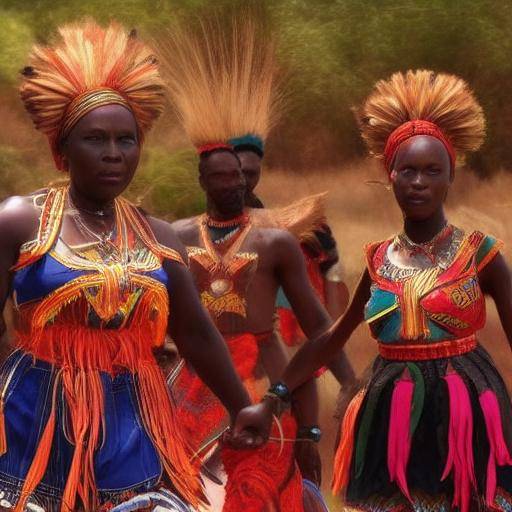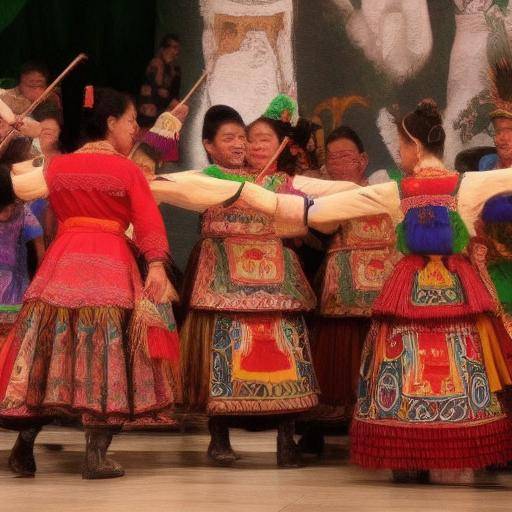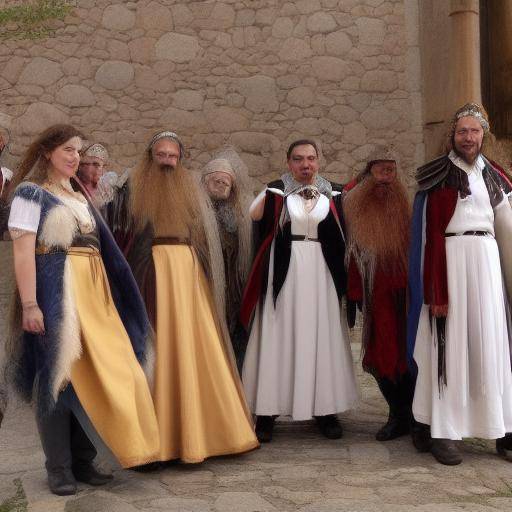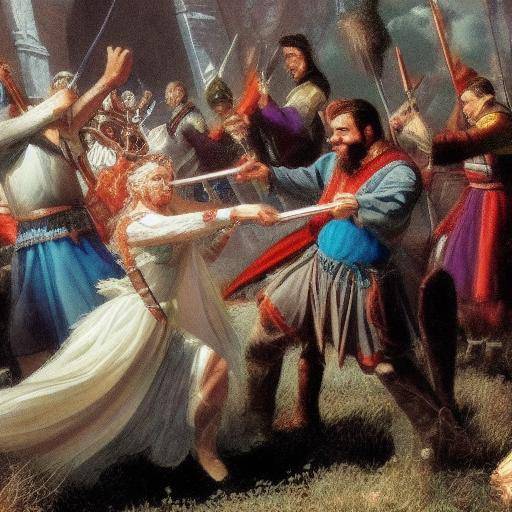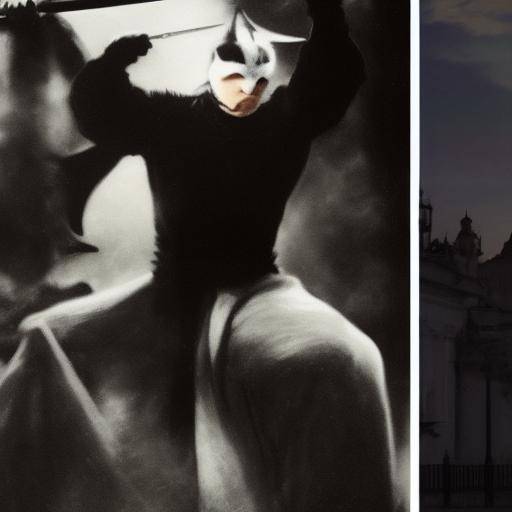
The fox of nine tails is a mystical creature that has been an important part of Japanese mythology and many other cultures throughout history. This magical being has awakened the imagination and curiosity of people of all ages by generations, becoming the theme of numerous myths and legends that continue to fascinate humanity today. In this article, we will explore the history of the nine-tailed fox, its role in Japanese mythology, and the fascinating legends surrounding it.
Introduction: The Mysterious World of the Nine Colas Fox
The nine-tail fox, known as "Kitsune" in Japanese, is a legendary figure that has been venerated and feared in Japanese mythology and other Asian cultures. These creatures, which resemble common foxes but with magical abilities, are known for their cunning, intelligence and supernatural abilities. The Japanese folklore presents Kitsune as a being able to change shape, adopting both the human form and the animal, and with the ability to generate illusions. Their physical appearance usually includes multiple queues, which symbolize their power and longevity.
History and Background: The Emergence of the Nine Colas Fox
The fox of nine tails has been an important part of Japanese mythology for centuries. Its origins date back to ancient traditions, where they were venerated as divine beings with the ability to bestow blessings and protection, as well as to cause chaos and misery if the creature was disturbed. Over the years, folklore has collected numerous Kitsune stories that have interacted with humans, bringing both joy and challenges.
Japanese mythology and the Fox of Nine Colas: Legends and Beliefs
The fox of nine tails, or Kitsune, has been a central figure in Japanese mythology, where supernatural powers and a significant influence are attributed to people's lives. These creatures are considered messengers of the gods, able to give blessings and wisdom to those who treat them with respect. However, they are also given the ability to cause mischief and misery to those who provoke or challenge them. These dualities have led to a rich variety of legends and beliefs around nine-tailed foxes.
The Foxes of Nine Colas in Popular Culture: Legends and Narrations
The nine-tail fox has transcended Japanese mythology to become an iconic symbol and a recurring figure in popular culture. His presence can be found in literary works, theatrical performances, films, visual art and music. They are often portrayed as mystical and intriguing beings, capable of challenging the norms of reality and captivating audiences with their charm and cunning. In modern Japanese culture, nine-tailed foxes remain a source of inspiration for creativity and fascination with the supernatural.
Legends of the Nine Row: Stories and Past Generation Stories
The legends surrounding the fox of nine tails are varied and diverse, transmitted from generation to generation through oral narratives, ancient writings and contemporary works. These stories explore the interaction between Kitsune and humans, revealing aspects of human nature, interpersonal relationships and the complexity of morality. Some of these legends capture the essence of the duality of the fox of nine tails, presenting them as benevolent beings or malevolent according to the circumstances and intentions of those who invoke them.
Analyzing the Influence of the Nine Colas Fox in Japanese Mythology and Beyond
The nine-tail fox has had a significant impact on Japanese mythology, as well as other Asian cultures. His presence in histories and traditions has shaped perceptions and beliefs about the nature of the supernatural, human duality and the importance of respecting the balance between the spiritual and earthly realms. This influence persists today, keeping alive the fascination for these mystical creatures.
The Representation of the Fox of Nine Colas in Modern Art and Culture
The artistic and cultural representations of the nine-tailed fox have evolved over time, adapting to the changing sensitivities and creative expressions. Today, these creatures remain protagonists in fiction, films, anime and mangas, keeping their status as icons of Japanese mythology. Contemporary representations continue to explore the duality of Kitsune, offering new interpretations and perspectives on their role in society and popular narrative.
Conclusion: The Mystery Nueve Colas Fox Charms
The fox of nine tails, as an emblematic figure of Japanese mythology, has left an indelible mark on collective culture and imagination. Throughout history, it has served as a source of inspiration, reflection and entertainment, captivating generations with its cunning, supernatural powers and enigmatic duality. His legacy endures in legends, mythology and popular culture, reminding us of the profound influence that mystical creatures have on the rich tapestry of human experience.
Frequently asked questions
**1. What is the origin of the nine-tail fox in Japanese mythology?**The fox of nine tails, known as Kitsune, has its roots in ancient traditions and animistic beliefs in Japan, where supernatural powers were attributed to him and he was considered a mystical creature with influence in people's lives.
**2. What do the nine tails of the nine tails mean?**The nine tails of the nine tails symbolize their power and longevity. According to mythology, a fox acquires a new tail every hundred years, and when it reaches nine tails, its fur becomes golden and bright.
**3. What are some of the most famous legends about the nine-tailed fox in Japanese mythology?**A notable example is the legend of Tamamo-no-Mae, a fox of nine tails that, in human form, became one of the favorite concubines of the emperor, causing political upheaval and triggering his eventual discovery.
**4. How has the nine-tailed fox influenced contemporary popular culture?**The fox of nine queues has been a recurring theme in literary works, films, anime and sleeves, keeping its appeal through modern artistic representations that explore its duality and mystical powers.
**5. What is the role of the nine-tail fox in mythology beyond Japan?**The fox symbol of nine tails and their mystical qualities have also appeared in other Asian cultures, adapting to local expressions and enriching the folklore of the region.
**6. How has the nine-tail fox perception changed over time in Japanese mythology?**The fox of nine tails has been portrayed as much as a benign figure that bestows blessings as a being that can cause mischief and misery, reflecting a nuanced view of the duality of mystical creatures in Japanese narratives over the centuries.
References:
- "The Fox'sWedding" by Yoshitsune Utagawa - Ukiyo-e, Public domain, https://commons.wikimedia.org/w/index.php?curid=6089120
- "Tamamo-no-Mae" by Yoshitoshi Tsukioka - Ukiyo-e, Public domain, https://commons.wikimedia.org/w/index.php?curid=52590136













